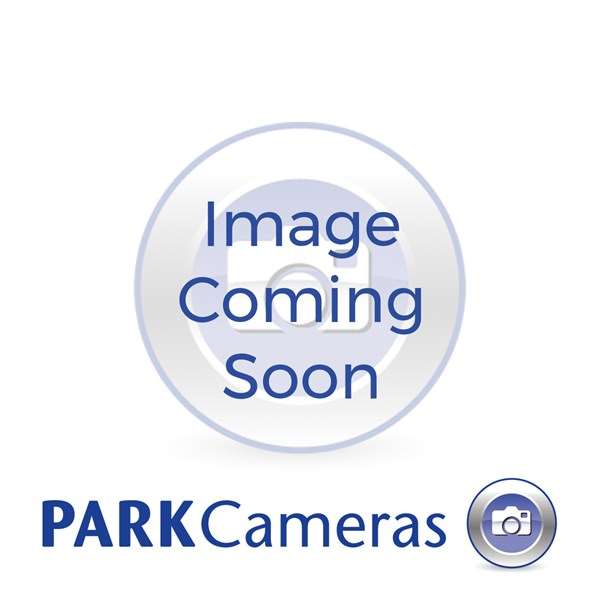- Call us: 01444 237070
- Contact Us
- Stores
- Sign In / Register
-
- Back
- Used Cameras
- Used Accessories
- Used Lenses
- Used Video
- Used Film Equipment
- Used Stock Alert
- Used Blank Test
- Sell or Part Exchange
- Used Clearance
- Recently Added Used Equipment
- Park Picks
- All Used Black Friday Deals
- Faulty
- Trade-In
- Blog
- New in
- Call us
- Contact us
- Stores
- Sign in
- Categories
- Tips & Inspiration
- Reviews
- News
- Events
- Features
- Buying Guides
- Competitions
Guide to Film Scanning
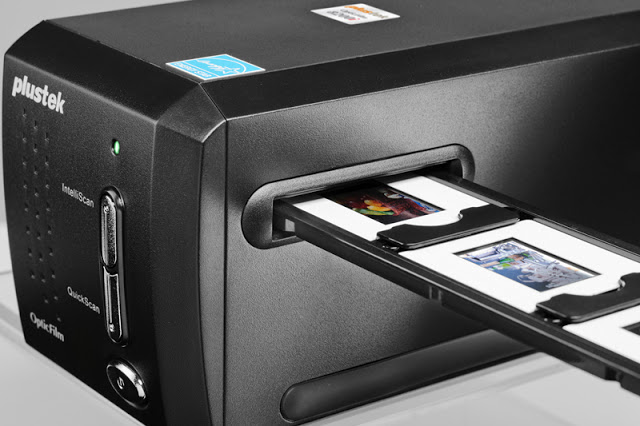
Explore your options of film scanning in 2019 - whether you want to batch scan negatives, scan prints as well, or straight from camera - our guide talks you through the options.
A guide to film scanning in 2019:
- Resolution
- Film Scanning Software
- Using DSLR to convert film to digital
- Flatbed Photo Scanners
- Negative Scanners
- Drum Scanners
Scanning film in 2019
Film has been making a comeback in recent years, proving that the ubiquitous smartphone hasn’t completely won the heart of today's image makers. The methodical process and physical results still seem attractive in today's fast-paced, cloud-based world. Nowadays though, users have the best of both worlds with new technology enhancing the creative possibilities and removing some of the more tedious aspects of analogue capture.
Film scanning is the bridge between the analogue and digital, allowing negatives and slides to be translated to 1’s and 0’s. In this comparison, we’ll look at the features and benefits of different scanners and some of the key terms.
Resolution
The resolution you need all depends on what the outcome will be for your photos. Resolution is measured in DPI (dots per inch) and generally the higher the DPI the better quality a scan will be, however there are other factors such as the quality of the optics used in the scanner and the software used to process the image captured which will also affect this.
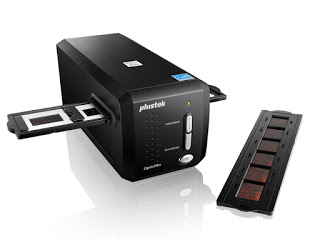
Film scanning software
Software is a key part of getting the best quality from your negatives as well as potentially saving you a lot of time. A lot of scanners are bundled with their own dedicated software which is designed to get the best out of the machine.
Dust and scratch removal is one of the most important innovations. Using an infrared channel, the scanner can pick up abnormalities on the film surface and remove them automatically, a process which could save you hours of post-scan editing and retouching. A multi-exposure mode can help increase dynamic range within your images to gain maximum detail in the shadows and minimise noise whilst colour correction can remove unwanted colour casts easily.
Using DSLR to convert film to digital
Compatible with the Nikon D850, the ES-2 Film Digitising Adapter lets you turn colour or monochrome images shot on film into high-quality digital files without using a scanner at all.
The process allows printing up to A1 size although means dust and scratch removal might have to be done.
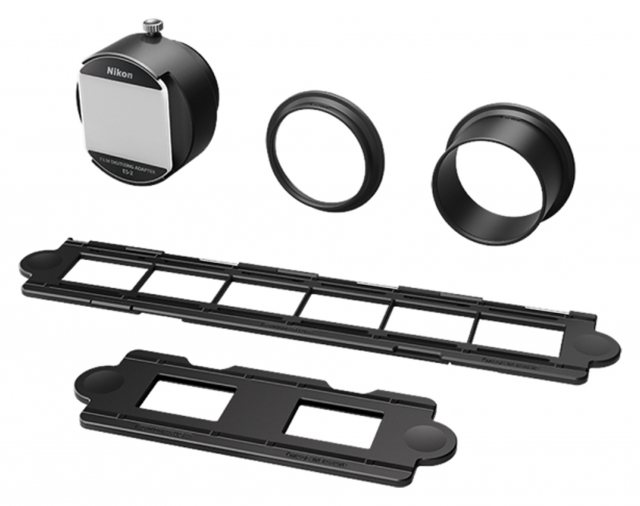
Flatbed Photo Scanners
If you're a fair-weather scanner and want the versatility of being able to scan physical photos and documents, then you may want to take a look at a flatbed scanner such as the Epson Perfection V600 Photo Scanner. Complete with film holders, it handles just about any size and format, including 35 mm filmstrips, mounted slides and full panoramic medium format film.
Despite this flexibility, you may find resolution, shadow and highlight detail not quite up to the same level as a machine dedicated purely to negatives.
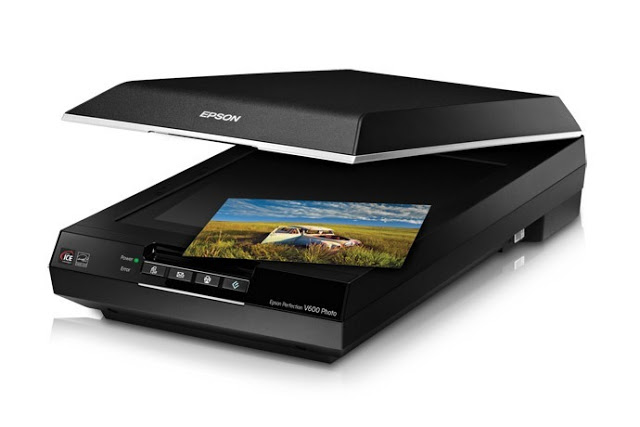
Negative Scanners
Dedicated negative scanners are perfect for photographers who require ultimate resolution and quality for archiving or print. If you use them regularly, they will also save you the cost of scanning at a lab, as well as giving you total control throughout the image workflow. At Park Cameras we offer the Plustek range of scanners, which vary in price depending on resolution, the type of software included and whether they have dust removal and other time-saving automation.
For online sharing and photo printing up to 12”x17” the 3600dpi OPTICFILM 135 Scanner is an ideal choice. With no warm-up time and motorised film transport for automatic batch scanning, it has all you need to get started.
For larger prints and greater control over noise and colour, you’ll need the 7200dpi resolution of the 8 series. There are three scanners which can capture this: the 8100 and 8200i SE and 8200i AI. They all include the more in-depth SilverFast 8 software and multi-exposure abilities. The 8200i models add a built-in infrared channel which detects dust and scratches on the original negative/slide and automatically removes them.
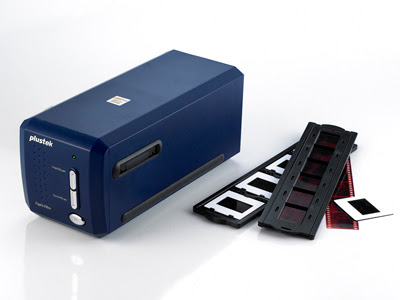
The 8200i AI scanner is Plustek’s top of the range 35mm scanner. Featuring the same resolution and image improvement aids as the SE this model adds more professional options including SilverFast IT8 colour calibration for consistent accurate colours and detail. The more in-depth SilverFast Ai Studio software is more complex and feature packed for enhanced control over your images.
Drum Scanning
Drum scanners are almost exclusively found at high-end photo labs and offer nothing but the finest nuance of detail and tone. Usually used for medium and large format negatives when nothing but the best will do.
Which type of film scanner should I use?
To sum up, then here are a few questions you need to ask yourself when choosing a negative scanner.
How often will you use it?
Not a lot? Consider a flatbed for versatility or use your DSLR. A lot? Consider a dedicated scanner with dust removal and other image quality automation.
Will you need it for other scanning i.e. photos, documents?
Yes? Get a flatbed to scan various items, such as negatives, prints and documents.
No? Go dedicated negative scanner for flat out quality.
Will you print your images and if so, how big?
Bigger than 12”x17” - aim for 7200dpi resolution or more.
Web use only? Anything above 2000dpi should be sufficient.
Do you want to be able to edit and adjust the way your scanner scans?
Yes? You’ll need advanced software such as SilverFast 8 included with Plustek scanners. No? Most scanners include software but can be set to automatic for ease of use.
View the full Park Cameras range of scanners.
Competition - win a Plustek OpticFilm 8200i SE scanner
Park Cameras are giving you a chance to win a Plustek OpticFilm 8200i SE scanner. All you need to do is answer the following question:
What is the name of the included software with 8 series Plustek scanners?
Silver + Light
SilverFast
Plustek ScanRight
Enter our competition (and read our T&C's) - good luck!
Share this post:
By Park Cameras on 15/03/2019

Trade in your old equipment
Fast and easy trade in service ensures your old gear is collected efficiently and you are paid quickly! It's very simple to trade in your unwanted photography gear. Just head over to our dedicated Sell or Part Exchange page, fill out the details, and we'll get back to you with an offer for your old gear. Take the cash, or put it towards the cost of your new gear. It's up to you! Find out more
sign up to the newsletter
Keep up to date on the latest photography news, events and offers. Sign up now
